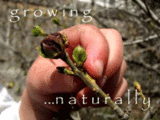A quick look at Amazon.com will see a zillion reviews of this book, spanning the spectrum from “love it” to “hate it”. If you have read the book, its not hard to have an opinion about it.
For the non-US readership, The Giving Tree is a Shel Silverstsein kids classic in the US which its marketed to small children, the type of thing a parent might read to a two or three year old, if said parent thinks it is suitable at all.
The story line is about a boy who receives a gift from a tree, and proceeds through all of life to make use of the tree, with absolutely no regard for the fact that he is destroying the tree with his unending neediness, and his voracious appetite for its gifts. The tree continues to give willingly, to its inevitable demise. It ends with a sense of emptiness, but of absolutely no remorse.
My problem is this.
Our small children, prior to the age of 8 especially, are really impressionable in a very binary sort of way.
To the small child, it is simply fact. Small people are needy. People never stop being needy, even when they grow up. A benefactor will supply that need. A benefactor can, will, and should supply that need to the point of its own demise.
That’s the sum total of the story to the small child. Whatever the parent says before or after is not the same as “the story”, and in the mind of the small child, bears no relationship to the story.
So, if you want your children impressed from an early age that they must be needy, and that they cannot find their own means to meet their needs, and that they must use up every available resource to no avail to fulfill those needs, read this book to your small children.
If, on the other hand, you want to impress your children with the subtleties the story has to offer, hand it to them a little while after they start developing strong opinions about how the world should run and how they’re going to fix it.
The story is a great comment on the consumer culture for anyone over the age of about 10. If you treat finite resources as though they are infinite, you will be empty. So will your world. (Had the needy sad-sack planted some trees instead of feeling sorry for himself, he could have had more than he could use… had the tree stopped giving before it expired, the sad-sack would probably be less sad… and so forth) Those subtleties are completely lost on small children, but are there for the teaching for children in that older age bracket.
So there is my position on the book. It has some redeeming philosophical subtext, but its definitely not good reading for a small child. The “lessons” of the book are far too complex for the very young to grasp. On the other hand, the example of voracious consumerism is one they are surrounded with every day. The impression that it always has to be that way is, in my not-so-humble opinion, detrimental to the raising of healthy young children.
I am firmly of the belief that small children live in a binary world, and it is up to us to fill it with useful facts, solid boundaries, and simple values while they take their time to get acquainted with life. As their minds develop, we then develop more complex values with them and eventually teach critical thinking and the art of rhetoric. Expecting critical thinking and complex decision making from small children is expecting too much… but that is a rant for another day.
Take Care
Rod
08 September 2007
The Giving Tree: what message does it send to our children?
Posted by
Rodney Smith
at
12:59:00 AM
Labels:
family,
homeschooling
Subscribe to:
Post Comments (Atom)











No comments:
Post a Comment
We're happy to hear from you; thanks!